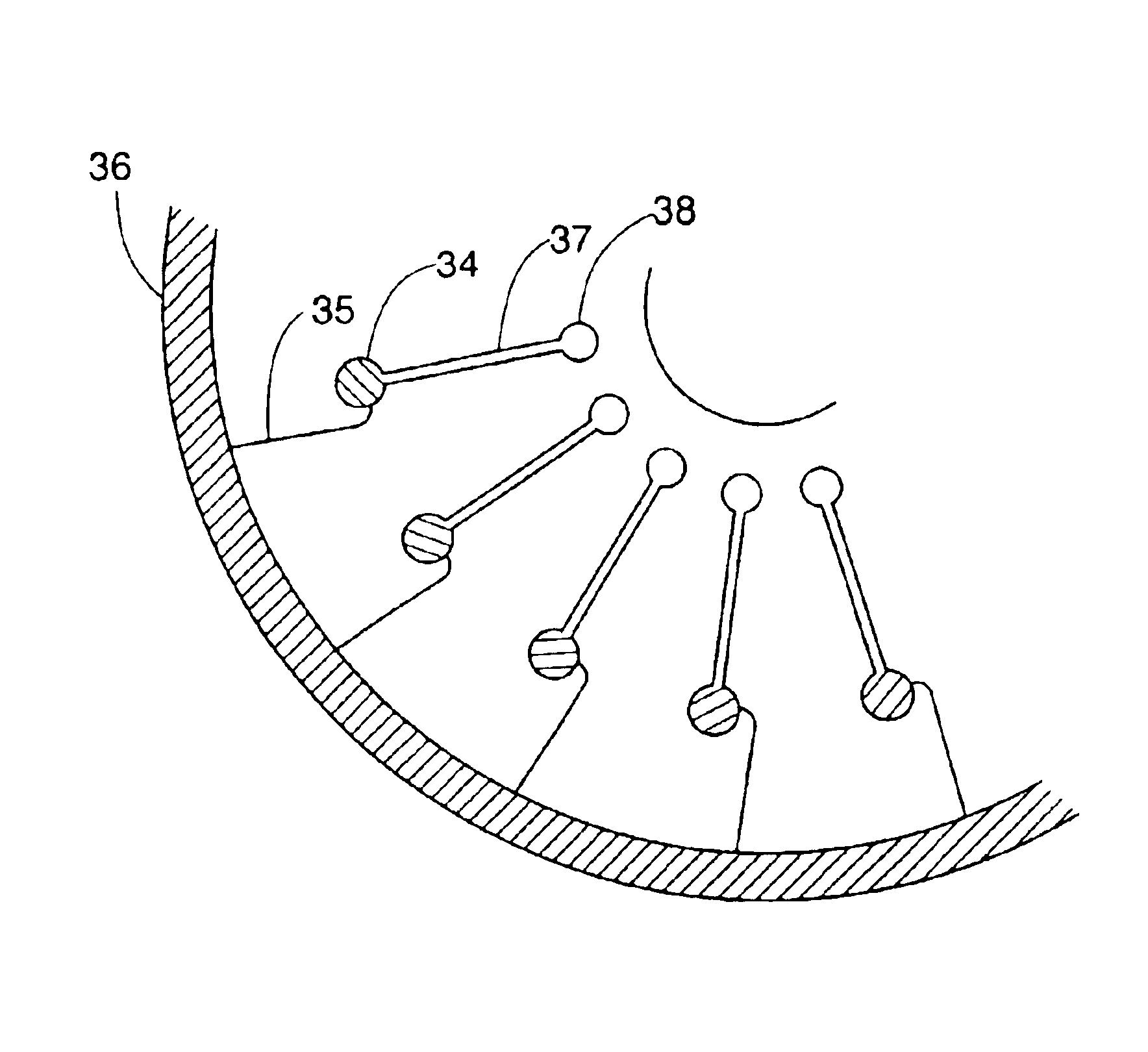Microfluidic system (EDI)
a microfluidic system and microfluidic technology, applied in the direction of fluid speed measurement, optical light guide, microreactor, etc., can solve the problems of imposing extra complexity on the design and use, affecting the production cost, and easiness of handling, so as to improve the efficiency and improve the presentation of ms-sample/ms-analyte, the effect of minimising the loss of precious materials
- Summary
- Abstract
- Description
- Claims
- Application Information
AI Technical Summary
Benefits of technology
Problems solved by technology
Method used
Image
Examples
example 1
Gold at Different Positions in a CD
This table shows the results form a summary of experiments performed before the priority date in order to optimise the design of the CD-MALDI interface. Gold was sputtered at various positions of the CD and the MALDI characteristics were studied for a tryptic digest of Bovine Serum Albumin (BSA). The CD was placed on a metal adapter inserted into the ion source. The gold was hence patterned in various ways to determine the importance of electrical contact between the MALDI ports and the adapter plate.
example 2
Planar CD and Structured Removable Lid
This example shows a planar CD in combination with a lid in which the microfluidic structures are present. The structured lid was achieved through casting Memosil (Hereaus, Germany) against a nickel-coated master. The microfluidic structure employed in this example is shown in FIG. 2.
The structured lid is attached to the CD by adhesion forces. The surface facing the lid should be hydrophilic as the presented invention utilizes capillary action to fill the microfluidic structures. This is especially important as the moulded lid, being a type of silicon rubber is hydrophobic.
The upper side of the CD was covered with gold using a DC Bias magnetron sputtering method (1* 10-5 torr, Ar plasma and titan as adhesion layer) and made hydrophilic according to the following procedure; The gold sputtered side was cleaned by rinsing with ethanol, followed by an oxygen plasma treatment (Plasma Science PSO500,). After plasma cleaning a self-assembled monolayer ...
example 3
Structured CD and Site-specific Elution
This example employs a CD with integrated microfluidic structures, a thin (.ltoreq.70 .mu.m) lid with holes at positions matching the MALDI port in the CD. The microfluidic structure employed in this example is shown in FIG. 1.
The polycarbonate CD was covered with gold as described above. The side was hydrophilized using the thiolprocedure described above. The lid (SkultunaFlexible, Skultuna, Sweden), having, pre-drilled holes, was attached to the CD through heat pressing at 135.degree. C.
Reversed phase beads (Source 15 RPC) with a diameter of 15 .mu.m were packed in the individual structures using capillary forces in combination with centrifugation. The columns were rinsed with ethanol and spun to dryness before 23 fmol of tryptically digested BSA was added and spun down using 700 rpm. The tryptic digest of BSA was generated according to the procedure described above. After sample addition, the column was rinsed twice with water. .alpha.-cyano...
PUM
| Property | Measurement | Unit |
|---|---|---|
| width | aaaaa | aaaaa |
| width | aaaaa | aaaaa |
| distance | aaaaa | aaaaa |
Abstract
Description
Claims
Application Information
 Login to View More
Login to View More - R&D
- Intellectual Property
- Life Sciences
- Materials
- Tech Scout
- Unparalleled Data Quality
- Higher Quality Content
- 60% Fewer Hallucinations
Browse by: Latest US Patents, China's latest patents, Technical Efficacy Thesaurus, Application Domain, Technology Topic, Popular Technical Reports.
© 2025 PatSnap. All rights reserved.Legal|Privacy policy|Modern Slavery Act Transparency Statement|Sitemap|About US| Contact US: help@patsnap.com



